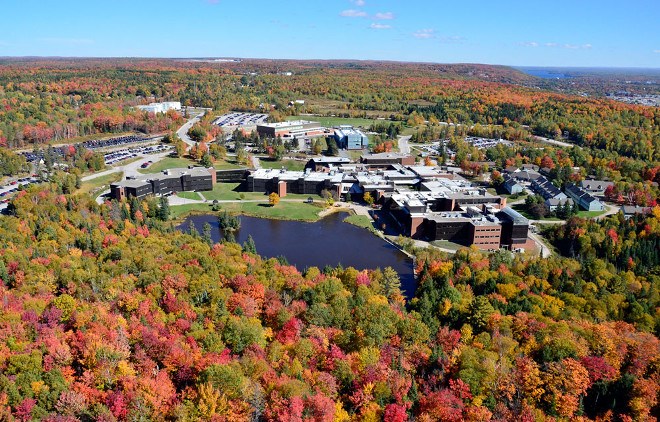Canadore College is embarking on a new approach to health and human care education, which will also introduce a unique model of care for aging residents.
Last October, the North Bay school announced it had been approved for the final piece of funding for the $12.5-million Village Living Wellness and Learning Centre, to be built on the Canadore campus.
Described as an “intergenerational living, teaching and learning facility,” the centre will include a 144-unit retirement residence that will offer Canadore students opportunities for learning and teaching in the health and human service programs while under the guidance of faculty who are regulated health professionals.
It will include retirement accommodations, short-term stay and rehabilitation beds, along with academic space to train students in areas related to senior care, such as nursing, occupational therapy, physiotherapy, personal support work, mental health and addictions, dental hygiene, recreational therapy, and more.
For its construction, the federal government is contributing $5.6 million, the province is contributing $800,000, and Canadore is contributing $6.1 million.
The facility is expected to create 100 jobs during construction and 120 permanent jobs once operational.
Canadore College president George Burton said the new facility, which has been five years in the making, was inspired by the simple idea that there’s always room for improvement.
“When we look at health care itself, which is a complex issue, we always have to be looking at better approaches to health care, whether it's preventative medicine or the healing process itself,” Burton said. “So we said, quite frankly, is there a better approach to this based on our own experiences and what we see that's already happening?”
Using an interprofessional approach to health care, students and practitioners will incorporate Western, Indigenous and Eastern medicine practices into their work; the prevalent concept is that no one single application is best.
With this holistic approach, Burton believes the school will graduate a new type of health-care professional, one who recognizes the value in all three areas of medicine and believes in using what works best for the client or patient.
Burton said this type of facility will be invaluable as the Canadian health-care system faces challenges posed by an aging Baby Boomer generation.
“We’re trying to get ahead of the curve on this, and I think our graduates will be in very, very high demand,” Burton said.
“I’m hoping that the learnings that we take from the Village, the very best practices that develop, can be replicated right across this country and that, in a decade or two, we have a better model for dealing with the aging and a better model for training individuals in the health and human care field.”
Burton said Canadore is currently in talks with the Northern Ontario School of Medicine to determine how exactly the two institutions can work together.
There will likely also be changes to Canadore’s program curricula to adapt to the new dynamic presented by the Village, which Burton said would evolve and develop as required by the client groups that are being served.
He’s particularly encouraged about the potential for new types of occupations that may emerge, especially as it relates to technology.
One example is artificial intelligence.
“We have lots of people developing artificial intelligence — we have it embedded in appliances in the broad sense — but we don’t have an occupation that really looks at the integration with the human being,” he said. “And so there are all types of program possibilities there that we’re really excited about.”
Canadore will also leverage its Innovation Centre for Advanced Manufacturing and Production (ICAMP), which is a hotbed for product prototyping and development, to attract companies looking to test out new technology related to human care.
“We’re doing some conscious efforts on this front, to reach out to the technology sector, to become one of those testbeds in something that we are creating that is unique,” Burton said. “To me, that creates opportunity as an institution, not only around programming, around learning, but also for companies that do want to use the environment that we’re creating here as a wonderful test site, in a multi-generational setting, for the particular application of a technology or a software.”
Burton said the college has about 90 per cent of its funding in place, but will launch a fundraising campaign this spring to raise the remaining amount.
The academic portion of the project will continue to be funded by the provincial government, while operational funds for the retirement residence will come from the private sector, he added.
Design work on the facility is in the final stages, and was to go out to tender in mid-February.
Construction is set to start in March, and substantial completion is set for April, 2018.
The facility will be occupied and operational by the start of classes that September.
It’s an aggressive timeline, Burton said, but he’s confident the school can meet it.
Burton commended both levels of government, as well as those in the health-care industry, for “taking this leap of faith and trying to develop this new model that will lead to better care for our citizens.”




